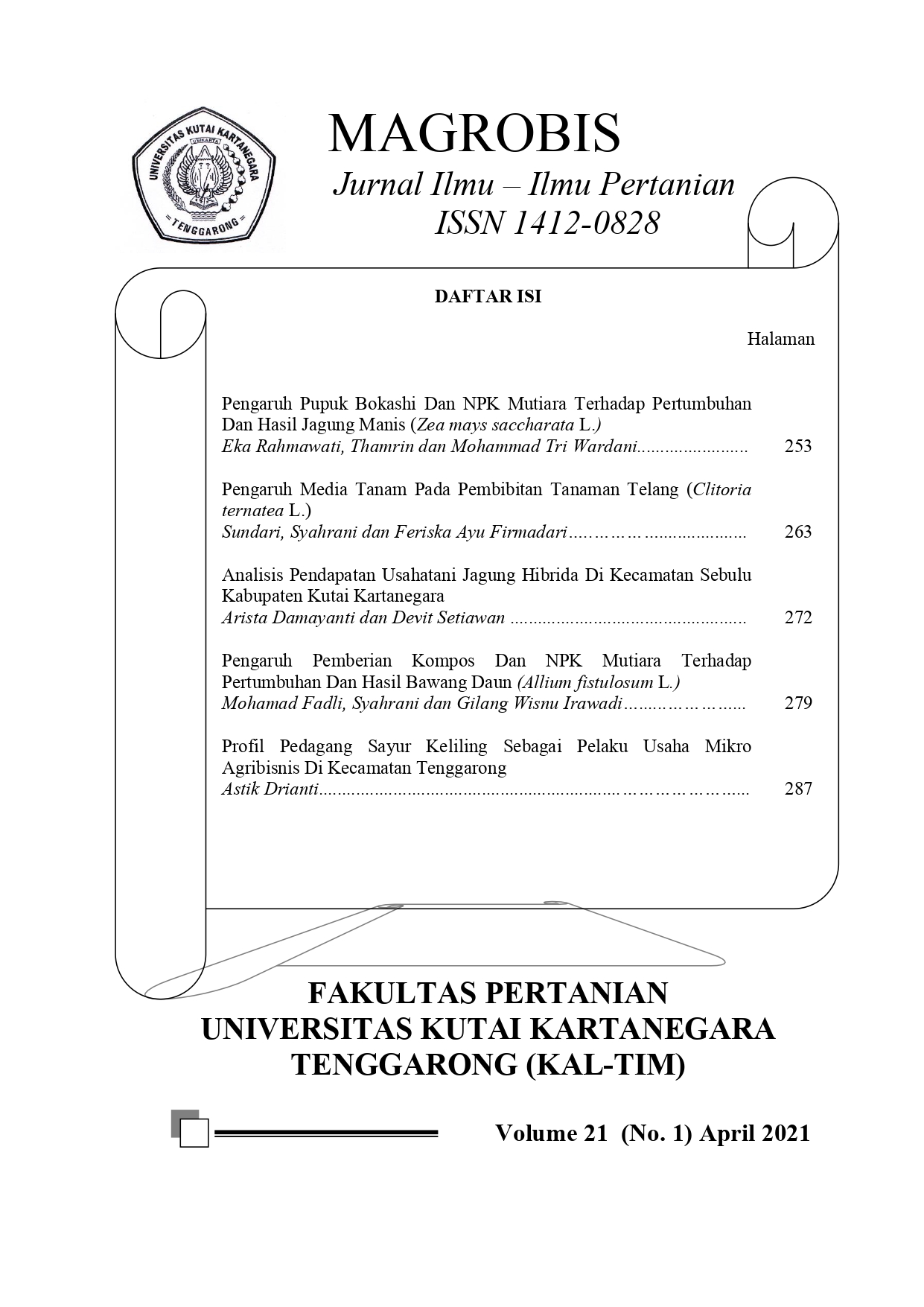PENGARUH PUPUK BOKASHI DAN NPK MUTIARA TERHADAP PERTUMBUHAN DAN HASIL JAGUNG MANIS (Zea mays saccharata L.)
Abstrak
This study aims to determine the effect of bokashi fertilizer and NPK mutiara on the growth and yield of hybrid sweet corn. This research was started from November 2017 to March 2018, at Jl.Melak II, Maluhu Village, Tenggarong District, Kutai Kartanegara Regency, East Kalimantan Province.
The research was arranged in a randomized complete block design (RCBD) with 4 x 3 factorial analysis with three replications. The first factor is bokasi treatment (b) which consists of 3 levels, namely b0 (without fertilizer), b1 (10.68 kg plot-1), b2 (21.37 kg plot-1) and the second factor of treatment is NPK fertilizer (n). which consists of 4 levels, namely n0 (without fertilizer), n1 (106.87 g plot-1), n2 (213.75 g plot-1), and n3 (248.37 g plot-1).
Based on the results of the study, the bokashi treatment had a very significant effect on the average plant height at 14 days after planting. However, there was no significant effect on the average plant height at 34 days after planting and 54 days after planting and the average weight of the cob per plant. The highest average cob with husk weight per hectare (t ha-1) was in treatment b0 with a yield of 8.57 t ha-1 and the lowest was in treatment b2 of 7.22 t h-1.
Based on the research results, NPK mutiara treatment has a very significant effect on the average plant height at 14 days after planting. However, it had no significant effect on the average plant height at 34 and 54 days after planting and the average weight of the cob per plant. The highest average cob with husk weight per hectare (t ha-1) was obtained in treatment n0 of 9.89 t ha-1 and the lowest was in treatment n2 with a yield of 5.12 t ha-1.
The interaction between bokashi fertilizer and NPK had a very significant effect on plant height 14 days after. However, it had no significant effect on the average plant height at 34 and 54 days after planting and the average weight of cobs per plant. The highest average cob with husk weight (t ha-1) was obtained in the b0n3 treatment interaction of 12.22 t ha-1 and the lowest was in the b1n2 treatment of 5.05 t ha-1.





